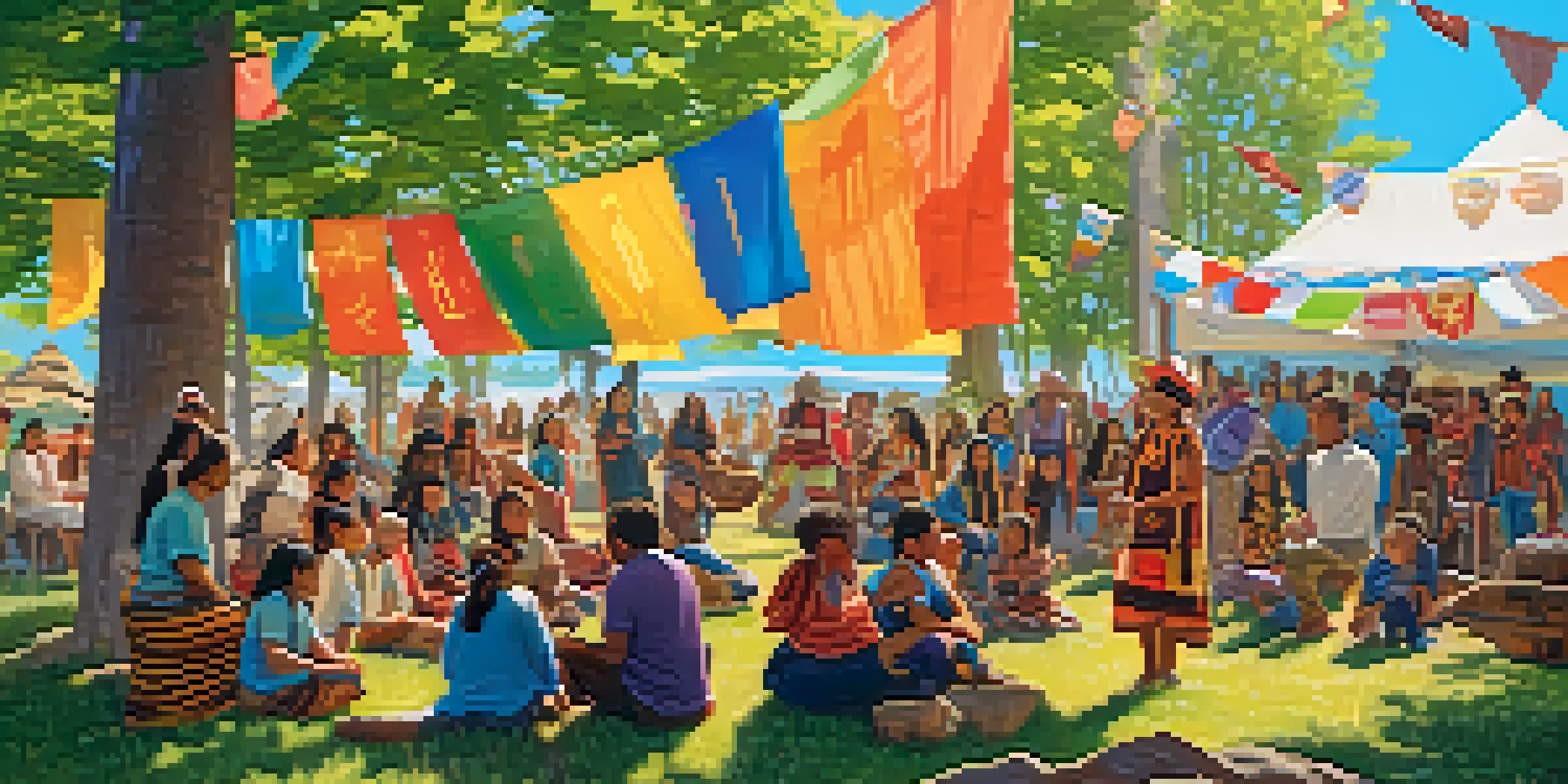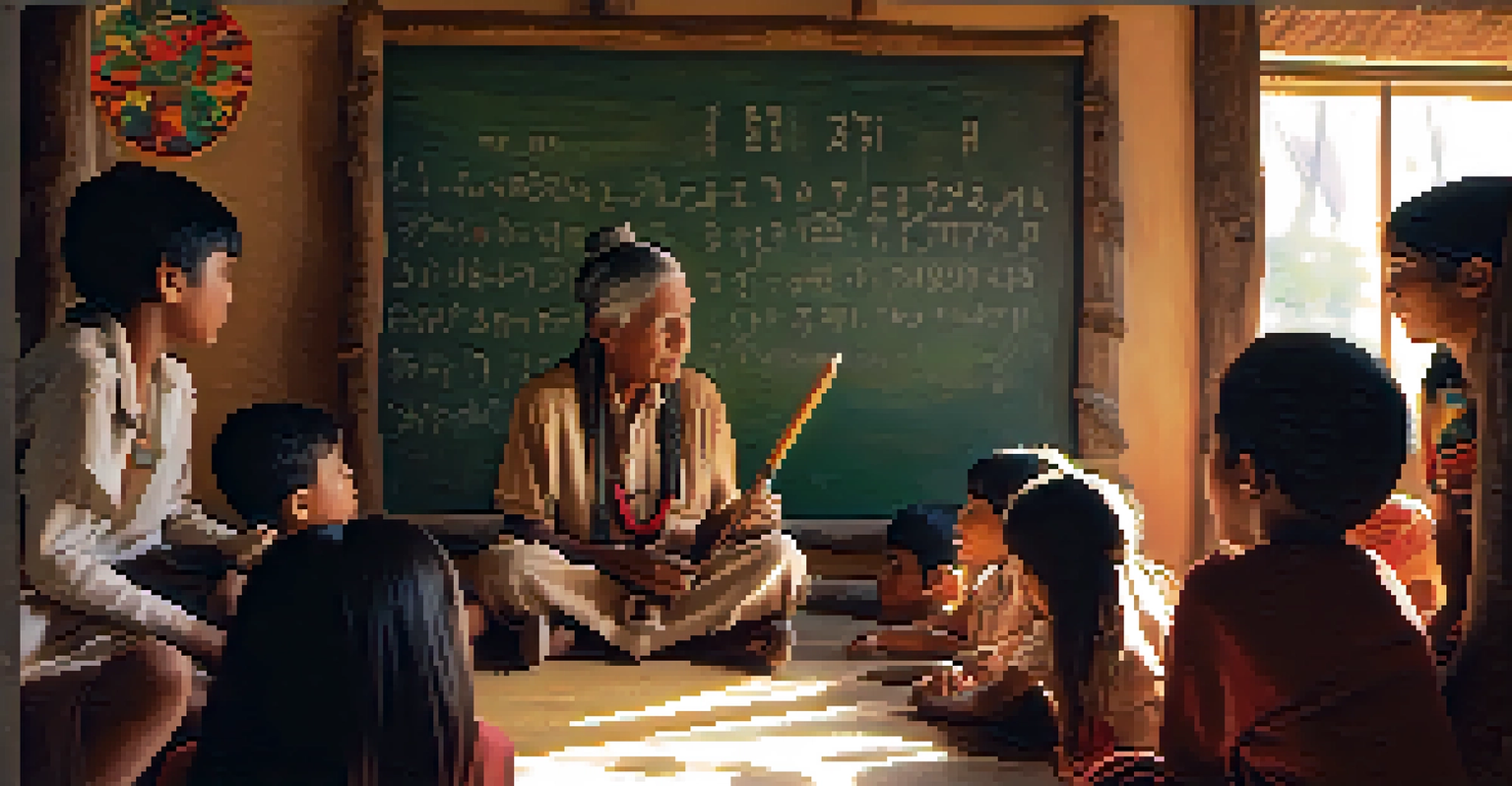Preserving Indigenous Languages in Modern Washington

Understanding Indigenous Languages and Their Importance
Indigenous languages are not just means of communication; they hold the history, culture, and identity of Indigenous peoples. In Washington State, languages like Salish and Chinook reflect unique worldviews and traditions that have been passed down for generations. When we lose a language, we lose a piece of that cultural fabric, making it crucial to understand their significance in today’s society.
A language is something infinitely greater than grammar and philology. It is the poetic testament of the genius of a race and the culture of a nation.
Language is deeply intertwined with community and belonging. For many Indigenous communities, their language is a key part of their identity, shaping how they see the world. By preserving these languages, we not only honor the past but also empower future generations to connect with their heritage.
Moreover, understanding Indigenous languages fosters respect and appreciation for diverse cultures. It encourages dialogue between communities and promotes inclusivity, which is essential in our increasingly interconnected world.
Current Status of Indigenous Languages in Washington State
Despite the rich cultural heritage, many Indigenous languages in Washington are endangered. According to recent studies, only a few fluent speakers remain, primarily among older generations. This decline is alarming, as it signifies not only a loss of language but also a threat to cultural identity.

Many factors contribute to this decline, including historical suppression and the dominance of English. Younger generations may feel disconnected from their heritage, often opting for mainstream culture, which can further distance them from their native language. This generational gap poses significant challenges for language revitalization efforts.
Cultural Importance of Indigenous Languages
Indigenous languages encapsulate the history, culture, and identity of their communities, making their preservation vital.
However, there is a growing awareness and urgency around this issue. Community leaders, educators, and activists are collaborating to create resources and programs aimed at revitalizing these languages, proving that it's not too late to take action.
Efforts and Initiatives for Language Preservation
In Washington, various initiatives focus on language preservation, ranging from educational programs to community workshops. Schools are increasingly incorporating Indigenous languages into their curricula, providing students with an opportunity to learn and engage with their heritage. These educational efforts are vital for fostering a sense of pride and connection among young people.
Languages are the most massive and inclusive art on earth. They are the history of the human race and the living embodiment of our culture.
Additionally, community-driven initiatives often include language camps and immersion programs, where participants can learn in an immersive environment. These hands-on experiences not only teach the language but also emphasize cultural practices, songs, and storytelling, enriching the learning process.
Technology also plays a role in these efforts. Apps and online resources are being developed to make learning Indigenous languages more accessible and engaging, especially for younger audiences who are already tech-savvy. This blend of traditional methods and modern technology offers a promising pathway for revitalization.
The Role of Community in Language Revitalization
Community involvement is critical in preserving Indigenous languages. When the community rallies behind a cause, it creates a supportive environment for language learning and use. This collective effort not only strengthens language skills but also reinforces cultural identity and belonging.
Moreover, community elders play a pivotal role in this process. They are often the keepers of knowledge and tradition, and their involvement in teaching younger generations is essential. Their stories and experiences bring the language to life, making it more relatable and meaningful.
Community Efforts in Language Revitalization
Active community involvement and educational initiatives are essential for preserving and revitalizing Indigenous languages.
Ultimately, when a community embraces its language, it fosters a sense of pride and resilience. This empowerment can lead to a broader cultural revival, where language becomes a living part of daily life, celebrated in homes, schools, and public spaces.
Challenges Faced in Language Preservation Efforts
Despite the positive initiatives, challenges remain in the journey to preserve Indigenous languages. One significant hurdle is funding; many community programs rely on grants and donations, which can be unpredictable. This financial instability can hinder long-term planning and the development of sustainable programs.
Another challenge is the societal perception of Indigenous languages. Often, there is a lack of understanding or appreciation for these languages outside of Indigenous communities. This can lead to challenges in garnering broader support for preservation efforts, making it essential to raise awareness and educate the public.
Furthermore, the impact of globalization cannot be overlooked. As cultures blend and evolve, Indigenous languages may be overshadowed by dominant languages. Balancing the need for modern communication while preserving traditional languages is a delicate dance that requires thoughtful strategies.
Success Stories: Revitalization in Action
Amidst the challenges, there are inspiring success stories of language revitalization in Washington. For instance, several tribes have successfully launched language immersion schools, where children are taught entirely in their Indigenous language. These schools not only promote fluency but also instill a sense of cultural pride and community.
Additionally, community gatherings and cultural events increasingly feature Indigenous languages, showcasing them in a celebratory context. This not only normalizes the use of these languages but also encourages younger generations to embrace their heritage.
Challenges in Language Preservation
Funding issues, societal perceptions, and globalization pose significant challenges to the preservation of Indigenous languages.
These success stories serve as powerful reminders of what’s possible when communities come together to reclaim their languages. They illustrate the potential for transformation and the profound impact of perseverance in the face of adversity.
Looking Ahead: The Future of Indigenous Languages
The future of Indigenous languages in Washington is hopeful, yet it requires ongoing commitment and collaboration. As more communities recognize the importance of language preservation, there is a growing movement towards revitalization. This momentum can lead to innovative approaches that blend tradition with modernity, ensuring these languages thrive.
Educational systems play a crucial role in this future. By integrating Indigenous languages into mainstream education, we can create an environment where these languages are valued and respected. This will not only benefit Indigenous students but also enrich the cultural landscape for all learners.

Ultimately, the preservation of Indigenous languages is about more than just words; it's about safeguarding a way of life and honoring the past. With continued effort, dedication, and community support, the languages of Washington can flourish, ensuring that the voices of Indigenous peoples are heard for generations to come.